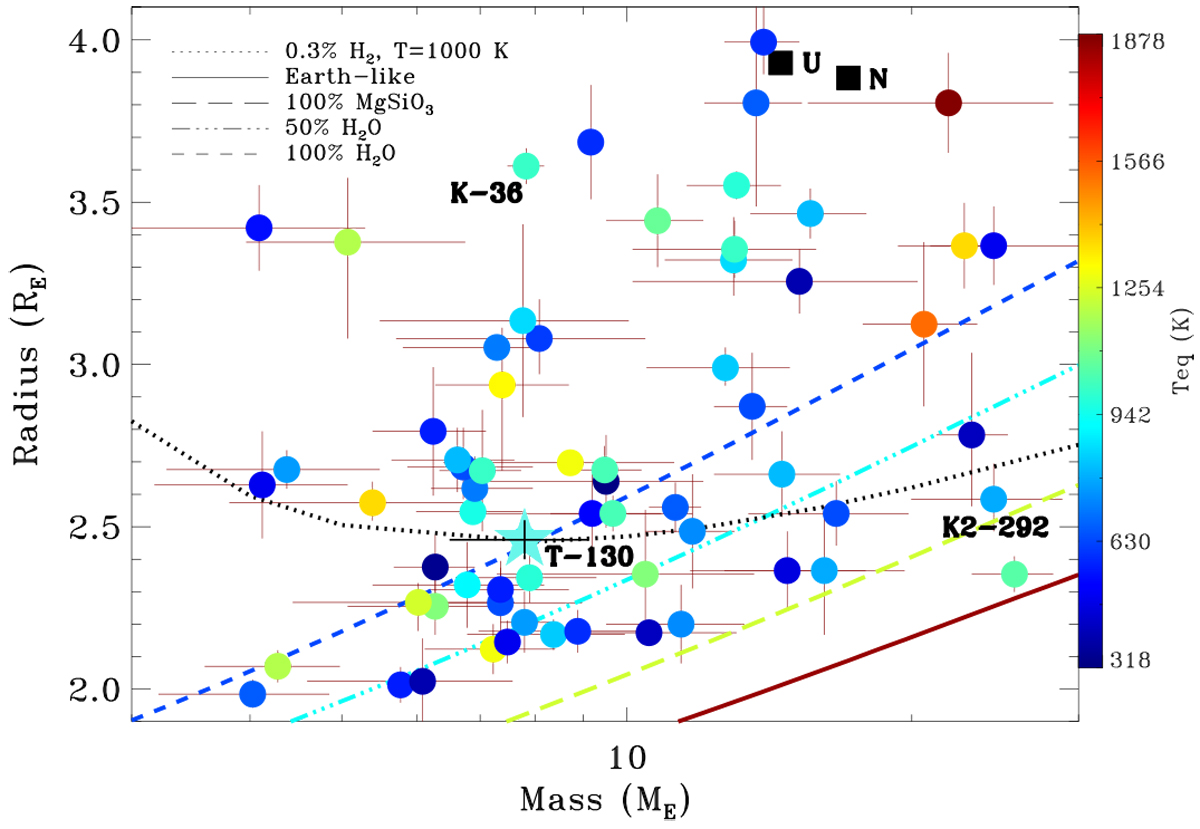Fig. 8

Mass-radius diagram of sub-Neptunes with masses detected at the 3σ level (or better), including HD 5278 b (star). The objects are color-coded by their equilibrium temperature. The different curves depict internal structure models of a variable composition from Zeng & Sasselov (2013) and Zeng et al. (2019) (as reported in the legend): Earth-like (32.5% Fe + 67.5% MgSiO3), pure rock (100% MgSiO3), 50% Earth-like rocky core + 50% H2O layer by mass, 100% H2O mass, and Earth-like rocky core (99.7%) + 0.3% H2 envelope by mass at a temperature of 1000 K. The location of Uranus and Neptune is also indicated. Data of transiting systems used for this and the following plots are taken from the TEPCat catalog as of September 2020. Along with TOI-130 b (T-130 for simplicity), Kepler-36 c and K2-292 b (K-36 and K2-292 for simplicity), which are discussed in the text, are also indicated in the plot.
Current usage metrics show cumulative count of Article Views (full-text article views including HTML views, PDF and ePub downloads, according to the available data) and Abstracts Views on Vision4Press platform.
Data correspond to usage on the plateform after 2015. The current usage metrics is available 48-96 hours after online publication and is updated daily on week days.
Initial download of the metrics may take a while.


